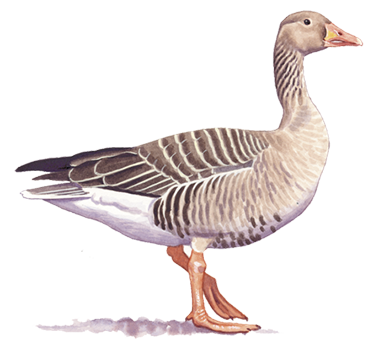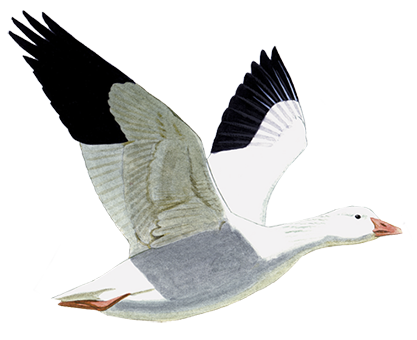Wild geese that breed in the Eurasian tundra come to Tata in the autumn and return north in early spring. A special and spectacular phenomenon of their journey is the almost perfect V-shape flight formation that we often see in this period. The number of geese that arrive in the Carpathian Basin and spend the winter here is over 300,000. Nowadays, with the help of birds with satellite transmitters, we know a lot about their migration routes.
The breeding area of Greater White-fronted Goose covers almost the entire Arctic part of Eurasia. Different populations use different paths, and they spend the winter in different parts of Central Europe. Greater White-fronted Geese can fly up to 7000 kilometers from their breeding sites beyond the Arctic Circle to their western or central European wintering areas, and the whole trip lasts for nearly four months with several resting stops. There are also populations that migrate less, following the seashore to their German-lowland wintering grounds. During winter they can fly even several times between the Dutch coast and Central Europe, sometimes in just a few days.
The breeding area of the Bean Goose lies in the Eurasian tundra and taiga. Birds come to Europe in two ways: along the coast and on the continental route. Accordingly, two large wintering areas were developed in Western Europe and the Carpathian Basin. Sometimes there is intense migration and population reorganization between these two centers.
Most of the wild geese arriving in Hungary use about 18 large gathering places as regular resting places. There may be as many as 50,000 birds gathered in one of the most prominent resting places, such as Tata Old Lake. They remain here in the mild winters, but if it is very cold and there is deep snow, which prevents them from finding food, they will continue southwards. Within the many thousands of wild geese at Tata, a number of rarities also often turn up: Lesser White-fronted Goose, Red-breasted Goose, Brant Goose, Pink-footed Goose, or the Barnacle Goose are always appreciated by local birdwatchers!










